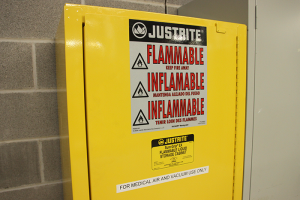Valley Children’s Healthcare builds energy resiliency
As a rural hospital in Madera, Calif., Valley Children’s Hospital, part of the Valley Children’s Healthcare system, is under significant pressure to keep its lights on and to improve community health because the 358-bed facility provides services to the children who have few other care options in the area.
To accomplish this, leaders adopted an environmental strategy to build energy resiliency and drive efforts for improved air quality in the region. The plan will reduce greenhouse gas emissions by 50% by 2030 and achieve net-zero carbon emissions by 2050 with the help of an on-site renewable energy microgrid.
“We are prone to power outages and rolling blackouts from heat waves. Generally, we have drought issues here in California, but this year we were hit very heavily with rain. So, we had that to contend with,” says Danielle Barry, senior vice president and chief operating officer at Valley Children’s. “We started this energy journey from the perspective of really needing to make sure that we continue to provide access to care to the kids in the area who don’t have any other alternatives.”
When online and operational in 2025, the microgrid will reduce reliance on the traditional power grid, ensuring the campus remains operational in the event of power outages in the region.
While this energy resilience could help keep its doors open during various weather events, leaders also realized that the hospital had to reduce costs to continue to operate in the future — an increasingly difficult task for rural facilities.
The problem is that large projects are often cost-prohibitive.
“In California right now, hospitals are struggling financially. Our adult community hospital here in Madera actually closed its doors in early January. There are a number of hospitals in the same situation due to our reimbursement challenges,” Barry says. “For us, 78% of our patient population is funded by Medi-Cal or Medi-Cal [Managed Care], and they pay roughly 74 cents to the dollar of cost. So, hospitals are losing money.”
To develop an energy strategy that takes into account operational resilience and environmental/financial sustainability, the hospital worked with Mazzetti, a design and consulting firm with offices throughout the country, on a plan to ensure that the initiative would be implemented in a cost-effective manner. Fortunately, the hospital also had the opportunity to secure contiguous land to build the microgrid on, making the project even more cost-effective.
In addition, while the plan ensured that the project would be cost-effective, when the government announced that the Inflation Reduction Act would enable hospitals to tap into $369 billion in tax credits by reducing greenhouse gas emissions, the hospital found itself in an even better position.




